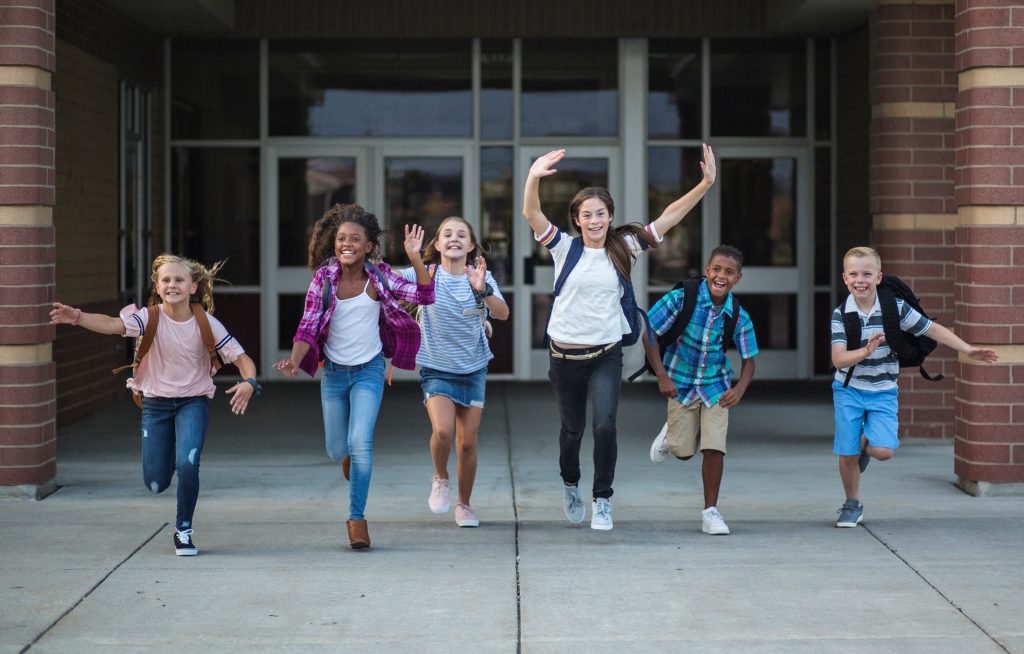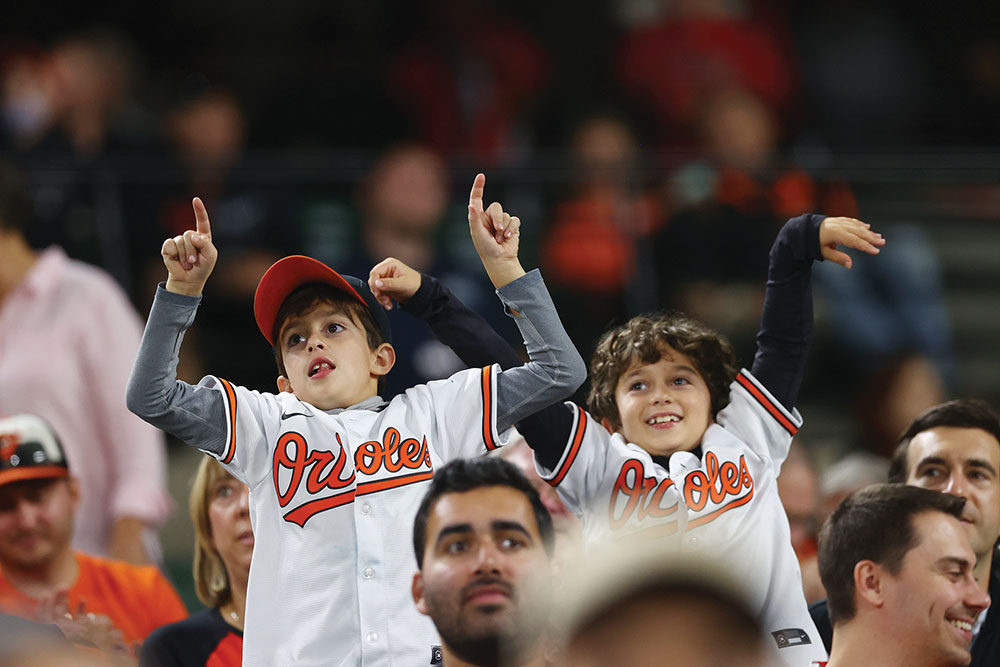
I tried to hyperventilate as quietly as I could as I stood outside the door of the 1930s-era brick school building. The crackling, indecipherable voice on the intercom system must have approved my entry because I was buzzed in. As I stepped into the fluorescent-lit front office, three women looked up and greeted me in sympathy. “Your little guy is fine,” one of them told me. “He’s waiting for you in the nurse’s office.”
“He’s so brave,” the second said.
“I’ll get him,” said the third. She turned and ran to the back room. These women, who met me when my son started kindergarten, knew my name, my 5-year-old son’s name and where he’d been playing and with whom when bees stung him. The nurse carried him out. My son was calm and chatty.
“What happened, buddy?” I asked him.
“I got stickers!” he replied with a smile. When multiple bee stings weren’t the headline of his story, I knew my son was in a good school.
What makes a school great? The first answer is usually test scores. Formal designations for “good” and “excellent” schools abound. Parents can refer to sources such as the Maryland State Department of Education’s Maryland Report Card or the Middle States Association Commission on Secondary Schools for test scores and rankings.
But using test scores and rankings to judge school quality is a little like judging a city by its ranking in an online listicle. Measurements and numbers may give you a quantitative measure of a place, if you know what’s being measured and how. What are the qualitative indicators—the characteristics that can’t be measured by numbers alone—that impact the quality of a school or school system?
We asked education professionals—principals, teachers, consultants, school psychologists and education professors, many of whom are also parents—to share their measures of school quality.
A great school is filled with positive energy
“You can feel it when you walk in a great school. It is a total sensory experience,” says Karen Steele, principal of George Washington Carver Center for Arts and Technology, a Baltimore County public magnet school. “There is an energy that resonates among the students, faculty and staff.” She cites students’ body language and expressions, student work display throughout a building and engagement in creative, meaningful learning experiences with other students and faculty members as examples of positive energy, interactions, performance and collaboration.
Steele believes that great schools “illuminate students’ talents and interests and inspire them to embrace new ideas and technologies.”
A great school creates a love of learning
Zulema Sockwell-Moore, principal of the William S. Baer School, a Baltimore City Public School for children with disabilities, believes great schools foster curiosity and a love of learning. She encourages parents to ask a school administrator about the quality of the teachers with questions such as how do teachers engage students? How do they correct students when they get the wrong answer? Are they encouraging students to just recall information or are they involving students?
“It’s better to combine rote learning with hands-on application,” says Moore. “This creates a love of learning.”
A great school has programs that interest your children and help them grow
“I am not a big fan of standardized tests, but it is the reality we all live in,” says Baltimore County-based education consultant Alicia Cooper Danyali. Danyali says it’s good if a school integrates tested skills into the curriculum, but it’s great if a school integrates these skills into programs that engage your child’s interests.
Faye Menis, a special education teacher and teacher mentor at the William S. Baer School, says she looks at the quality of the courses offered and how many students participate in advanced placement (AP) and higher-level courses.
A great school has a positive, collaborative culture
A good school has a family feel, says Moore. “The staff knows each other’s students and has a collective agreement to work together. I love to see staff who love their school, see its potential and believe in it.”
A great school has smaller class sizes
Due to a nationwide teacher shortage, class sizes are trending upward, according to Dr. Mavis Brown, an education professor at the University of Richmond. Brown says the student-teacher ratio is an important factor in education quality. She cites studies by The National Education Association, which show smaller classes of 15 to 17 students is ideal.
A great school is safe, both physically and emotionally
Most of the educators interviewed say they would judge a school by its safety—both physical and emotional. “A child won’t learn from someone who they think doesn’t like them,” says Moore. “A child will struggle on a math test if they had no dinner last night. A child will struggle with behaviors if they have not been taught social-emotional strategies and how to deal with emotions.”
Danyali agrees that the COVID-19 pandemic forced everyone to prioritize—and define—physical and emotional safety this year. “The environment for our kids should prioritize building community, resilience and independence,” she says.
A great school supports students’ emotional needs
The pandemic was disruptive, but it gave parents an unprecedented window into their child’s education and spotlighted research that has shown social and emotional wellness is critical to learning and overall success.
Dr. Jacquelyn Gordon and Linda Gaskill, two Maryland school psychologists, say good schools incorporate social-emotional learning opportunities into the school experience. These opportunities include talking about traumatic experiences, such as the pandemic, in group settings, teaching and enforcing good boundary setting and defining the school community’s values.
“Research shows that social and emotional learning teaches children to build rewarding and maintain meaningful relationships, work effectively with others, make responsible decisions and solve difficult problems, navigate stressors and challenges, and build resilience,” says Gordon. She adds that these skills can promote positive experiences for kids as they progress from early childhood through adulthood.
Steele says that good schools are “providing for social-emotional development and well-being; preparing students to be resilient, conscientious, empathetic, responsible decision makers; and developing students’ skills of adaptive and critical thinking and self-advocacy to persist toward achieving their goals and dreams.”
A great school understands its role in the larger community
“Meaningful service-learning initiatives that make real-life connections are important,” says Danyali. Great schools are finding organizations for service that interest students, including projects that can be student-led and meaningful to the point that students would be motivated to get involved outside of school.
A great school knows parents are crucial to their children’s educational success
“Parents and families are integral partners” with a school and its staff, says Steele. She recommends that parents immerse themselves in the community, get involved in the school by volunteering or provide internships for students.
Parental involvement, she says, “is where the magic happens.”









